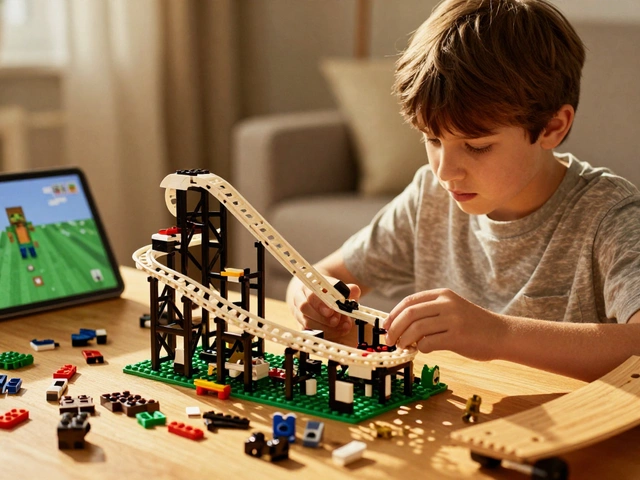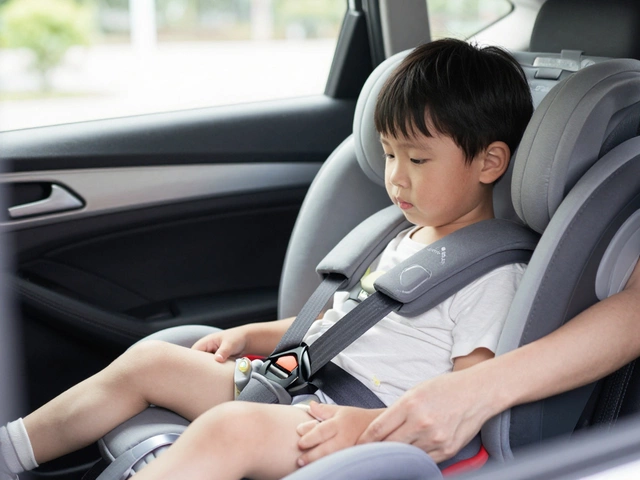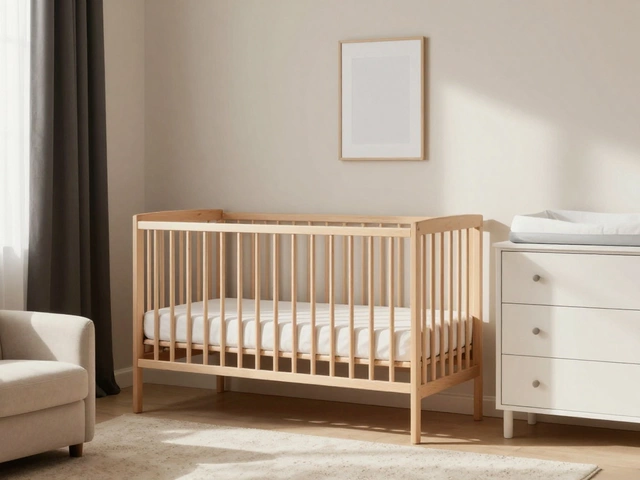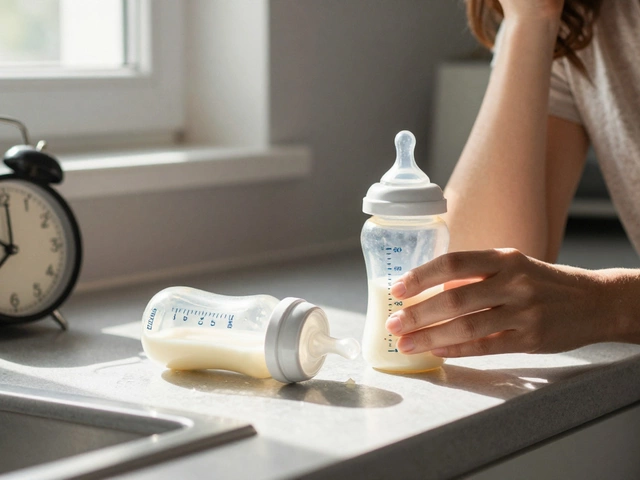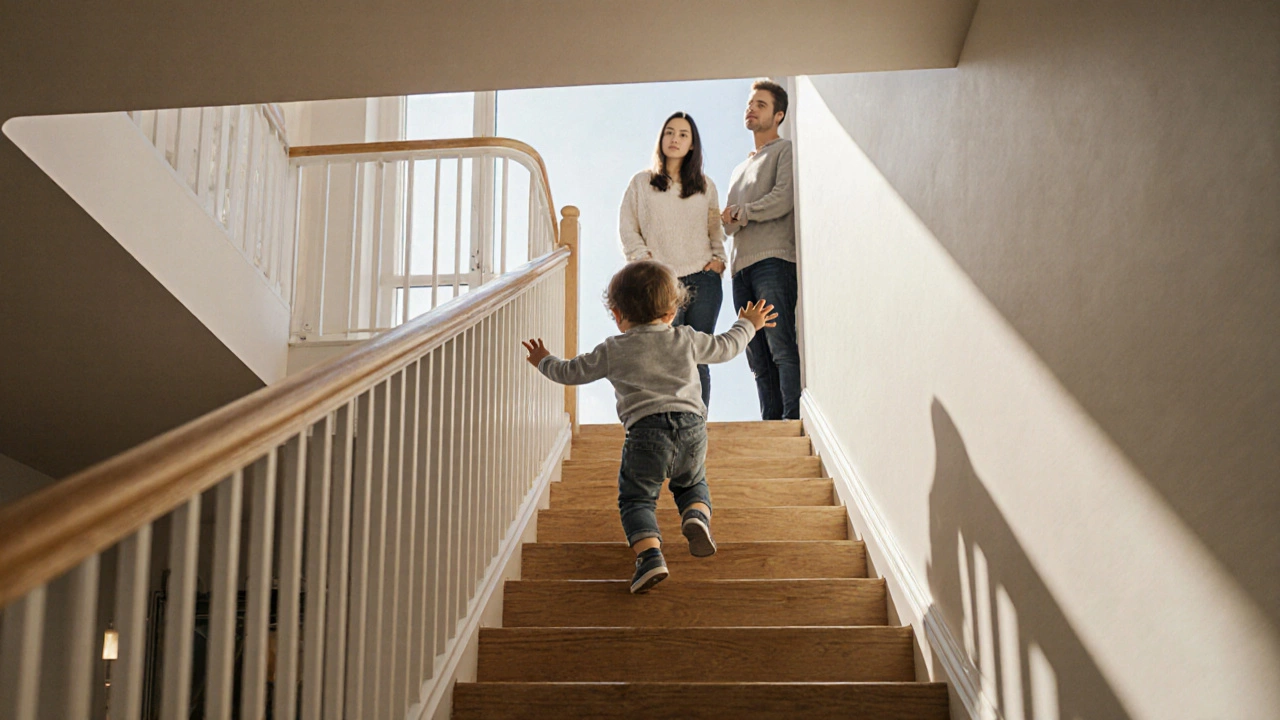
When your little one starts cruising, those stairways become a real worry. The big question parents face is whether the baby gate a barrier designed to keep children away from unsafe areas like stairs should sit at the top of the stairs or at the bottom. The answer isn’t a one‑size‑fits‑all; it depends on your home’s layout, the type of gate you own, and the safety standards that apply.
Key Takeaways
- Hardware‑mounted gates are generally safer at the top of stairs, while pressure‑mounted gates work best at the bottom.
- Check the slope of your stairs - steep, narrow, or uneven steps favor a top‑landing installation.
- Follow CPSC guidelines the Consumer Product Safety Commission’s recommendations for child‑proofing stairs for mounting height and hardware requirements.
- Secure the gate to a sturdy surface; drywall alone rarely provides enough hold for a top‑landing gate.
- Test the gate daily - it should withstand at least 30lb of pressure without shifting.
Why stair layout matters
Stairs are not just a series of steps; they’re a staircase a series of risers and treads that connect two different floor levels with landings at the top and often at the bottom. The top landing the flat area immediately after the last step is usually larger and can support heavier hardware. The bottom landing the area before the first step, often narrower and sometimes carpeted may lack a solid wall for anchoring.
These physical differences affect how a gate bears weight and resists a toddler’s climbing attempts. A gate installed at the top must hold the force of a child leaning against the wall above the stairs, while a bottom‑installed gate mainly resists a child pulling it forward.
Gate types and how they mount
There are two main families of gates:
- Pressure‑mounted gate a gate that uses tension between two walls without permanent hardware. Ideal for renters and for places where drilling isn’t an option.
- Hardware‑mounted gate a gate that screws directly into studs or a solid frame for maximum stability. Recommended for high‑traffic areas like stair tops.
Each type has a sweet spot. Pressure‑mounted gates are easier to move but can give way under a determined toddler, especially on a steep stair. Hardware‑mounted gates provide a lock‑in‑place feel but need proper stud detection and sometimes a drill.
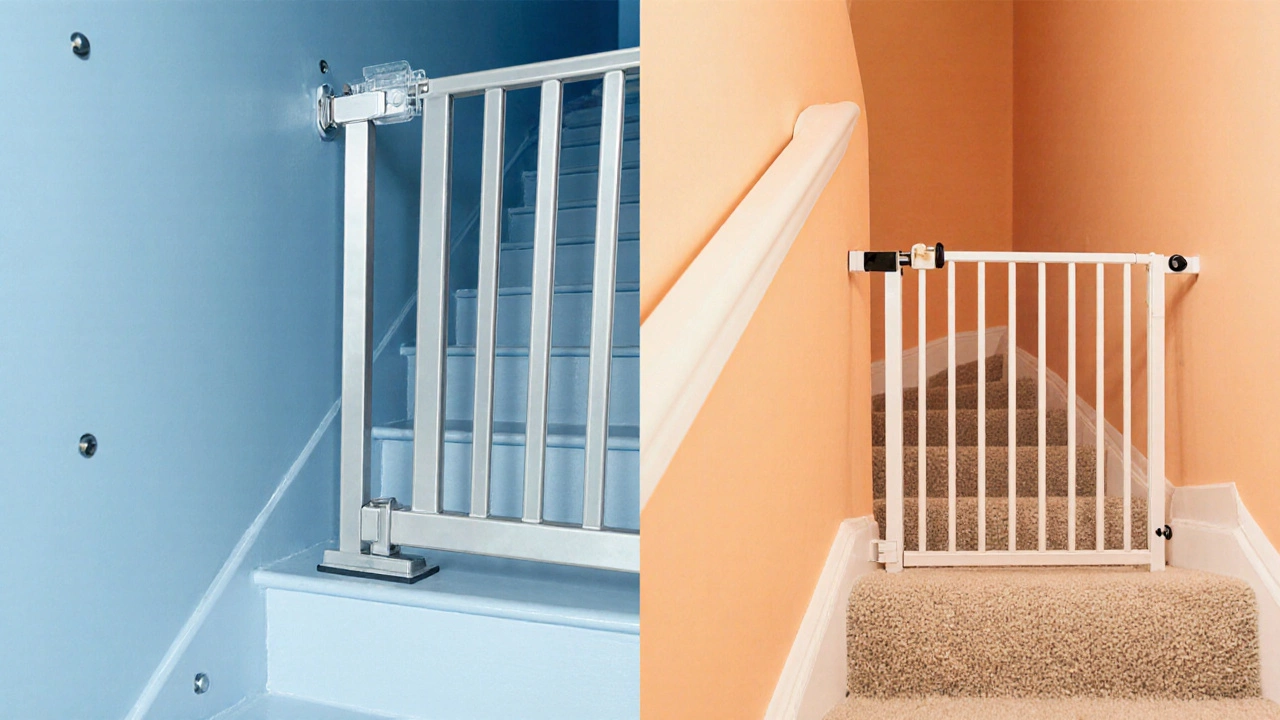
Placing the gate at the top of stairs
When you mount a gate at the top, you’re protecting the area where the child would fall down the stairs. Here’s what works:
- Stability: A hardware‑mounted gate attached to studs can handle the full force of a child leaning over the railing.
- Visibility: Parents can see the child from the landing, making supervision easier.
- Height compliance: CPSC guidelines require the gate to be installed between 29 and 35 inches high, which the top landing usually accommodates.
- Potential drawback: If you only have a pressure‑mounted gate, the top landing’s wall may not provide enough grip, especially on curved staircases.
Placing the gate at the bottom of stairs
Bottom placement keeps the child from even stepping onto the first tread. It works best in these scenarios:
- Carpeted or softer flooring: A pressure‑mounted gate can squeeze between the carpet and the wall without damaging the surface.
- Limited stud access: If there’s no stud at the bottom, a pressure‑mounted gate may be the only feasible option.
- Ease of use: Adults often find it simpler to open a bottom gate when carrying bags or a baby.
- Risk factor: A child can still climb up the railing and bypass a bottom gate if the railing isn’t child‑proofed.
Top vs Bottom Placement Comparison
| Aspect | Top of Stairs | Bottom of Stairs |
|---|---|---|
| Maximum safety | Prevents falls from height; hardware‑mounted most secure | Stops entry onto first step; depends on gate type |
| Installation difficulty | Requires studs or solid wall; may need drilling | Often pressure‑mounted; easier for renters |
| Effect on traffic flow | Leaves bottom clear for passing adult traffic | May block entry/exit from lower floor |
| Child’s ability to bypass | Harder if gate is high and sturdy | Child can climb railing if not also child‑proofed |
| Maintenance | Check screws regularly; tighten as needed | Check tension weekly; replace if wall compresses |
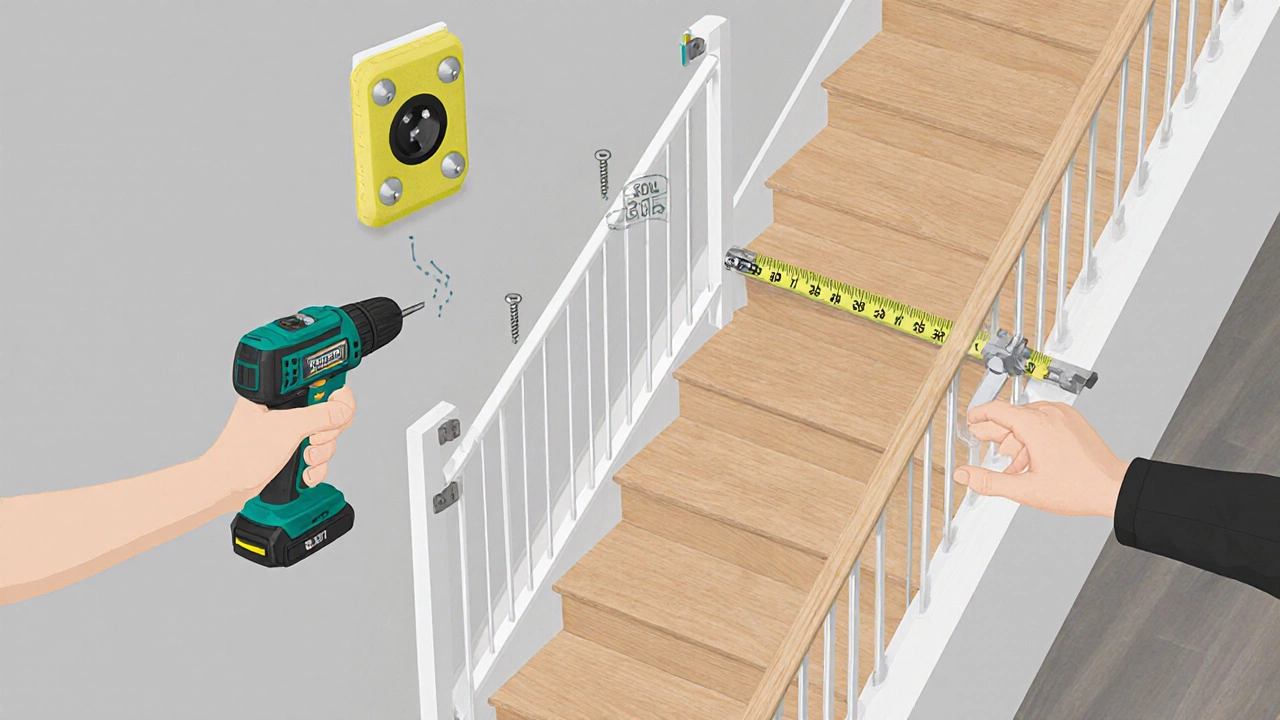
Installing your gate safely
Regardless of where you decide to put it, follow these steps to make sure the gate does its job.
- Measure the width of the opening twice - once at floor level and once at gate height. Use the smaller measurement for purchase.
- Locate studs using a stud finder. Mark the center of each stud with a pencil.
- For hardware‑mounted gates, pre‑drill pilot holes (½in. drill bit) into the stud marks.
- Attach the mounting brackets using #8 wood screws. Ensure brackets are level.
- If using a pressure‑mounted gate, place the gate between the walls, then tighten the tension knob until the gate is firm but not cracking the wall.
- Test the gate: apply a steady 30lb pressure on the center of the latch. It should not shift more than ¼in.
- Check the latch height - the latch should be at least 12in. from the floor so a toddler can’t reach it.
Once installed, make a habit of testing it weekly. Temperature changes can cause wood to expand or contract, affecting tension.
What can go wrong?
- Studs missing: If you can’t find a stud at the desired spot, use a toggle bolt or shift the gate slightly to align with a stud.
- Carpet compression: Pressure‑mounted gates can lose grip on thick carpet. Insert a thin piece of plywood behind the gate to create a solid surface.
- Gate tilting: Uneven walls cause tilting. Use a level during installation and add shims if needed.
- Child tampering: Some toddlers learn to wiggle the latch. Choose a gate with a double‑lock or one‑hand release that’s out of reach.
Address these issues quickly - a compromised gate is a false sense of safety.
Frequently Asked Questions
Can I use a pressure‑mounted gate at the top of stairs?
You can, but only if the wall is solid (no drywall alone) and the gate’s tension rating meets the CPSC guidelines. Most experts recommend a hardware‑mounted gate for top‑landing because it offers the strongest resistance to a child leaning on it.
What height should the gate be installed?
Install the gate between 29 and 35in. from the floor, which matches the CPSC guidelines. This range prevents most toddlers from climbing over.
Do I need a gate on both the top and bottom of the stairs?
If you have a sturdy hardware‑mounted gate at the top, a second gate is usually unnecessary. However, if you only have a pressure‑mounted gate at the bottom, consider adding a second barrier for extra peace of mind.
How often should I check the gate’s stability?
Give it a quick shake and test the latch weekly. Re‑tighten screws or tension knobs as needed, especially after seasonal temperature shifts.
Can a gate be installed on a carpeted stair landing?
Carpet can reduce the grip of a pressure‑mounted gate. Use a thin plywood spacer behind the gate or opt for a hardware‑mounted gate that screws into studs behind the carpet.


